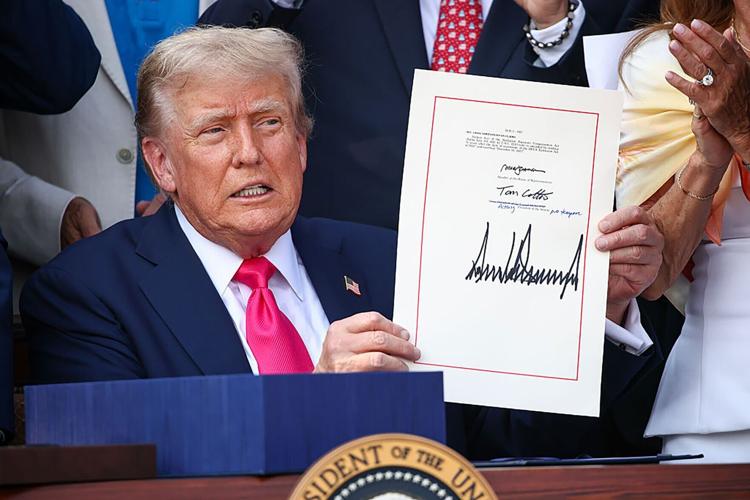The Trump tax and spending plan is now . At nearly 900 pages, there is plenty to absorb – and even something for everyone, but the bottom line is that the legislation is primarily a tax cut for the wealthy, funded disproportionately by lower-income families.
Here is a snap shot of winners and losers:
Lower-income earners lose the most
Let's start with the folks who can least afford to get squeezed. The finds that the bottom 20 percent of households (those earning less than $18,000) would see their income reduced by 2.9%, or about $885 in 2030. Because many of these people do not pay much in federal income taxes, they don’t benefit from tax savings.
People are also reading…
However, they are likely to get hit by cuts to , the health insurance plan for 70 million lower income Americans, and the Supplemental Nutrition Assistance Program (“SNAP” formerly known as food stamps), which provides food and nutrition for more than 40 million Americans.
The middle class sees a mixed bag
Whether or not you reap some of the benefits of the bill depends on whether you: rely on tips (temporary deduction for qualified tip income, regardless of itemizing status, in tax years 2025 through 2028, capped at a $25,000, with a phase out for individuals with income greater than $150,000 ($300,000 for Married Filing Jointly (“MFJ”); work overtime (deduction capped at $12,500 for individuals ($25,000 MFJ), phases out for individuals with income greater than $150,000 ($300,000 MFJ), and ends after 2028), or own a home in a high tax state (the state and local tax, SALT, deduction cap increases from $10,000 to $40,000, for taxpayers earning less than $500,000, until 2029, before reverting to the $10,000 cap permanently.)
According to various models, the differences net out to a push — no big increase or decrease for the middle by 2030.
High-income earners — The biggest winners
The richest Americans would receive the biggest benefit—instead of losing 2.9% in income, like the bottom earners, the top 5% would gain 2.9%. The bill also permanently increases the estate tax exemption to $15 million ($30 million MFJ), beginning in tax year 2026. This rule benefits the wealthiest American families, who will not pay any federal estate tax on amounts up to these levels.
The US fiscal outlook: A loser
Various analyses have found that the bill will cost at least $3.3 trillion over the next decade. To those who say that economic growth will offset these costs, the numbers just do not add up. According to Wharton, the bill “will lower GDP growth over the next 30 years... at the same time, the Senate reconciliation bill increases debt by 17.5% over the next 30 years.”
Other (selected) winners:
Auto loan borrowers: There will be a temporary deduction for qualified passenger vehicle loan interest from 2025 through 2028, with a limit of the lower of: $10,000 per year, or 20% of the taxpayer’s AGI more than $100,000 ($200,000 MFJ).
Seniors 65 and older: This group will receive a temporary (2025 through 2028) bonus deduction of $6,000 per individual, which phases out at a rate of 6% of AGI over $150,000 for MFJ, or $75,000 for all other filers.
Other (selected) losers:
Student borrowers: College students and their families are facing the end of subsidized and income-driven loan repayment plans, imposition of new overall limitations on student borrowing, and tightening of Pell Grant eligibility.
Future EV buyers: The bill eliminates or substantially limits several tax credits designed to encourage investment and production of clean energy, alternative fuels, and electric vehicles.
_____
_____
(Jill Schlesinger, CFP, is a CBS News business analyst. A former options trader and CIO of an investment advisory firm, she welcomes comments and questions at askjill@jillonmoney.com. Check her website at )
©2025 Tribune Content Agency, LLC



















